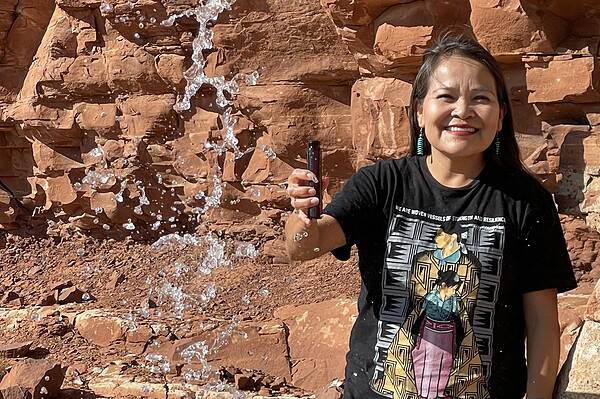
Science on Tap research talks return tomorrow night!
Head to Woody’s tomorrow night forDr. Larissa Yocom’s presentation on “The Mysterious Case of Tree Death in Ray Mesa”

Head to Woody’s tomorrow night forDr. Larissa Yocom’s presentation on “The Mysterious Case of Tree Death in Ray Mesa”

Lichens, resilient enough to survive space, are under threat from climate change. Steve Leavitt discusses their role as biodiversity hotspots, ecological indicators, and unexpected tools in air quality research.

Paleontologist Brian Davis uncovers rare Jurassic mammal fossils near Cisco, Utah—teeth, jaws, and clues to ancient ecosystems—shedding light on overlooked microhabitats and fossilization’s challenges.

Science Moab recently spoke to paleontologist Randy Irmis. Randy teaches at the University of Utah in the Department of Geology and Geophysics, and is the curator of paleontology at the Natural History Museum…

On summer afternoons, the Moab heat can be extreme. Sun-baked sidewalks can radiate heat like a griddle, forcing barefoot pets and toddlers to dash for shaded patches. Starting July 19, Moab City will…

Science Moab talks to Dr. Karletta Chief about finding water resiliency

Science Moab joined Kara Dohrenwend, Director of Rim to Rim Restoration, along Pack Creek one summer morning to discuss creek science and restoration in the Moab area. Dohrenwend: Rim to Rim Restoration started…

Connecting to the world with science

Ray Mesa, near the La Sal mountains on the Colorado-Utah border is notable for its old-growth ponderosa pines (estimated to be several hundred years old) that are growing in cool drainages amongst pinyon-juniper woodlands. Recent ponderosa tree mortality raised concerns among land managers and Larissa Yocom, a fire ecologist at Utah State University, began exploring the potential causes of these deaths.

Researchers from multiple universities are collaborating with Tribal groups to create a virtual reality experience of sacred sites in Bears Ears. The Bears Ears Digital Cultural Heritage Initiative combines photogrammetry, ethnographic interviews, and community involvement to digitally preserve and interpret these important cultural landscapes.